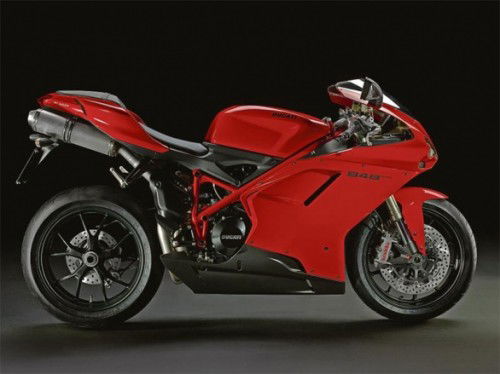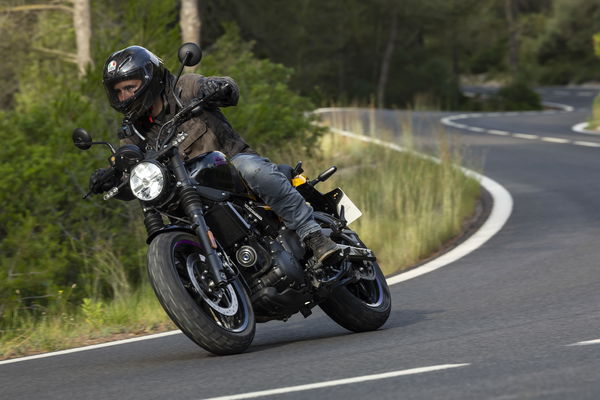2011 ZX-10R review
The 2011 Kawasaki ZX-10R retains the mad Zed feeling but backed up with best traction control in the business.
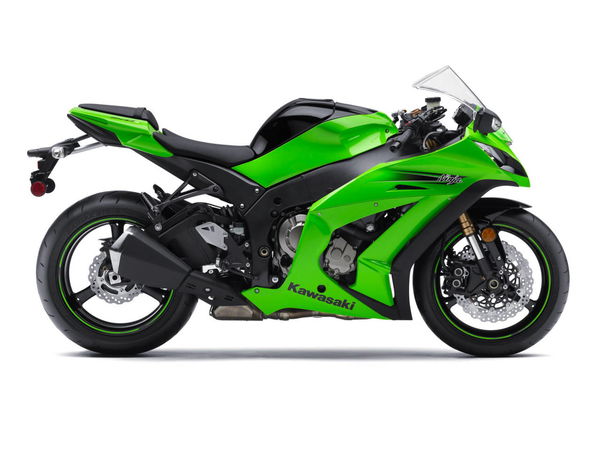
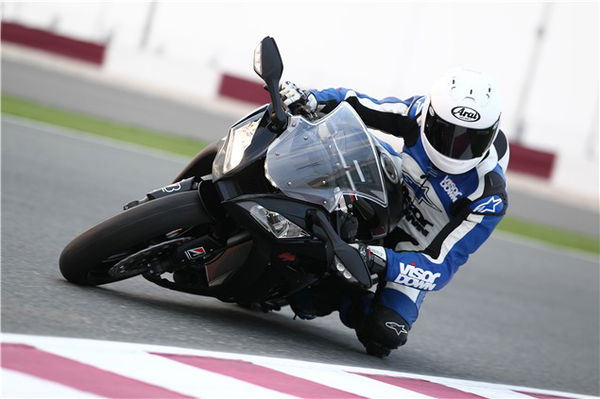
Featuring a new engine, frame and suspension, the 2011 Kawasaki ZX-10R represents the first complete redesign since the ZX-10R’s debut, and offers a significant jump in base performance.
The much awaited new model steps up to the plate with a claimed 200bhp at the crank, traction control as standard and the option of ABS. No prizes for guessing the bike Kawasaki want to knock off the top spot.
One thing is clear; Kawasaki aren't messing about with this one. Since the original ZX-10R in 2004, they've struggled to keep up with the competition but with the new bike boasting S-KTRC, Kawasaki's clever traction control system, three power modes and the option of KIBS, Kawasaki's ABS system, the 2011 ZX-10R is packed with the latest technology and spoiling for a fight with the litre superbike class leaders.
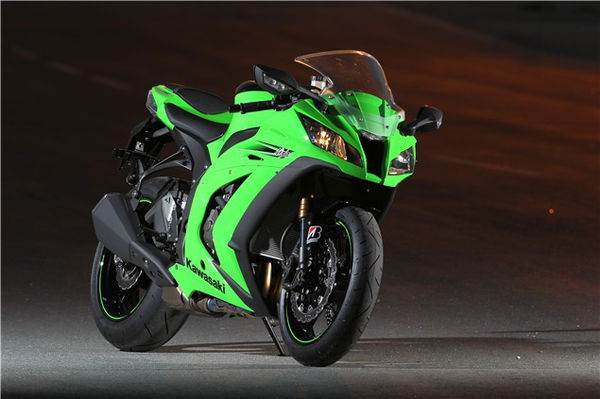
2011 Kawasaki ZX-10R first ride
The first thing you notice about the ZX-10R is how small it is. A ZXR400 was the first bike I thought of when I slung my leg over the 10R in the oppressively hot Qatar heat. It's a full 10kg less than the outgoing 2008 ZX-10R too. I don't know about you but I'm still impressed at the rate at which these bikes get developed. The all-cast frame is the lightest in its class and has enabled Kawasaki to make these huge weight savings.
I had five sessions out on track and used the first two to learn the Losail circuit. I can confidently say that Losail is the toughest circuit I've ever ridden, it's as flat as a tea tray, with no obvious trackside features and to make it even more awkward: every corner looks the same.
Despite not getting to grips with the circuit in the first couple of sessions, I had plenty of time to get comfortable with the basics that make the new ZX-10R so good. It handles like a 600, in fact better than most. The front end feels so plush, so precise and very light.
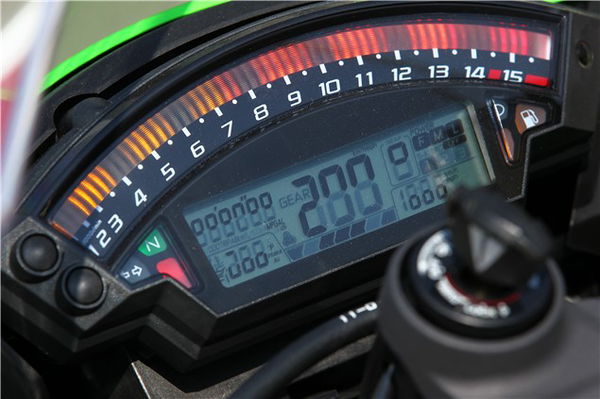
In order to build confidence, I have to trust the front-end and when I was running into corners too hot in the early sessions while still getting to grips with the circuit, the front never protested and my confidence didn’t take a knock.
Although the new ZX-10R’s wheelbase is 10mm longer than the outgoing model, there’s no way you could accuse the new 10R of being a barge.
You can remove the bike’s standard cat and move the rear wheel in by 16mm. I’m not sure you’d need to as the 10R already drops into corners with little effort and handles the transition flick from left to right with ease. Shortening the wheelbase might make the 10R more nimble but potentially at the cost of its stability through the longer 120mph+ right-handers at the back of the Losail circuit.
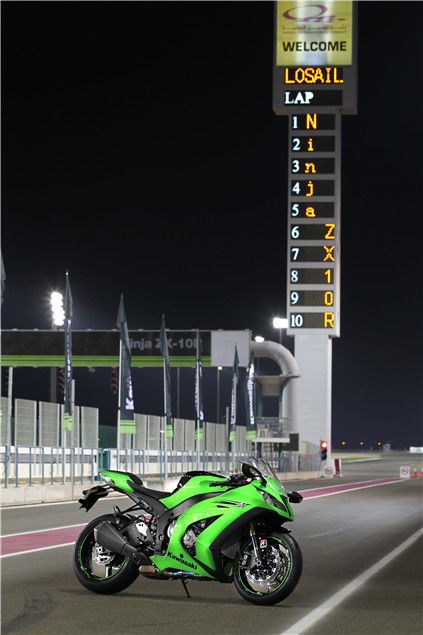
The brakes are astonishingly powerful but I suppose they'd be nothing without the 43mm Big Piston Forks. If you've not ridden a bike with a set of these forks on, you need to. They give you feedback in High Definition.
I stuck to 2nd and 3rd gear for the early sessions so I could concentrate on braking and turn-in points. The engine's power delivery is incredibly smooth, so much so that it doesn't feel like a big and torquey litre superbike that kicks in with a big wallop, it fizzes like a 600 and because the Losail circuit is so wide, it was hard to feel just how much grunt the 10R really has. I'm sure if I was riding around Cadwell Park I'd be able to tell you a different story...
Kawasaki have used more precise engineering techniques when building the new engine, so much so that lighter pistons and lower tension piston rings are used. The result is a bike that revs with a ferocity that I've only ever seen matched by a two-stroke 250 race bike.
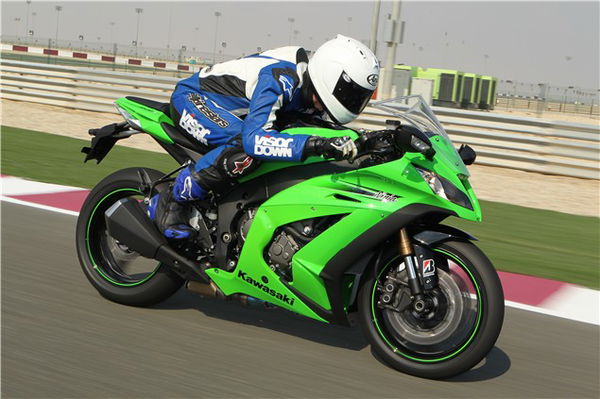
It is so easy to dial up too many revs, deliver too much power to the rear wheel and fire yourself into a corner 20mph faster than you should be going. Ideal when you're learning the circuit!
The throttle response is razor sharp, especially in the lower gears at higher revs. It took some getting used to at first as I found the pick-up jerky coming out of both of Losail’s left-hand hairpins. The pick-up was so quick I found myself rolling off before rolling on again, unsettling the bike and feeling a touch disconnected from the engine.
There’s nothing wrong with the bike, it was just me that needed to adapt and once I tempered my harsh and eager throttle hand, I had a lot more confidence in setting the revs to where I wanted them to be and focusing on getting on with getting the 10R into the turn.
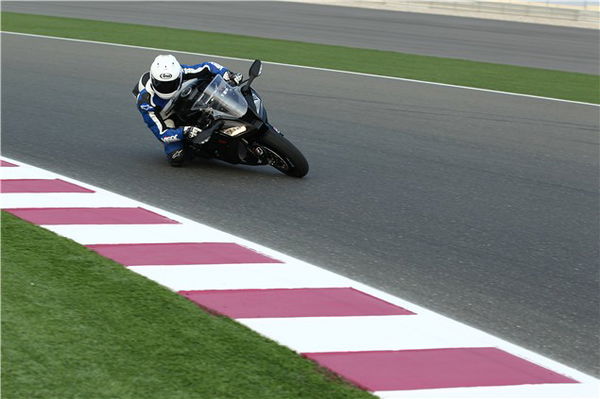
It was only in the last session of the day – the first time I put in some proper laps – did I get to feel the benefit of what is arguably the best bit of technology on the new ZX-10R; S- KTRC. Traction control to you and me.
Developed from Kawasaki’s experience in MotoGP, it is a sophisticated system. Gone are the days that traction control is just there to prevent you from highsiding yourself into next week. Kawasaki boasts that the new Sport Traction Control system is designed to maximise forward motion by allowing a certain amount of rear-wheel spin.
Every half of a split-second the system is monitoring front and rear wheel speed, engine rpm, throttle position, current spin rate and acceleration. It also remembers what you did the laps before and builds up enough information to predict what you’ll be doing next.
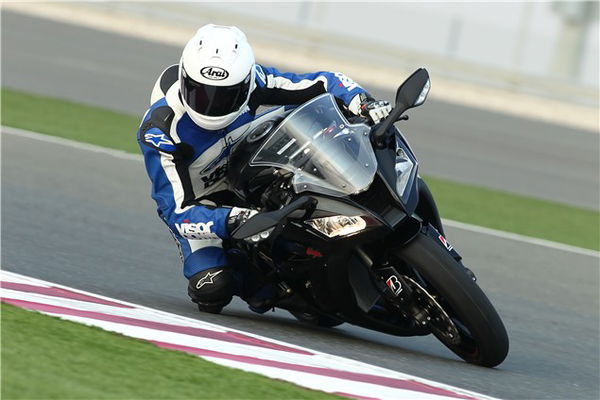
Such is my trust in S-KTRC, I was getting on the power at the exact moment I wanted to and instead of feeding the throttle in, keeping myself a healthy distance from highside territory, I was holding it wide open and letting the S-KTRC sort out the repercussions of my demands to send 200bhp towards the rear Bridgestone BT-003.
Now, you may turn your nose up at that and say ‘where’s the skill?’ but the feeling of holding the ZX-10R pinned to the stop in 3rd with the rear drawing a black arc is unbeatable. Racers might do that lap after lap with just their skill, but I’m happy trading a lack of skill for a nice dollop of technology.
It took a few laps to get my head around cracking the throttle open in 2nd gear while still banked over but if you trust the system, you’ll reap the rewards.
Traction control isn’t the be all and end all of superbikes, but it’s clear from the sales figures this year - and BMW’s results in World Superstock - that it helps. When it goes on sale, the new Kawasaki ZX-10R will be the best Japanese superbike money can buy, no doubt. The trouble is, gone are the days when being the best Japanese meant you were the best.
Is it better than the 2009 S1000RR? If I were BMW, I’d be reaching for the drawing board.
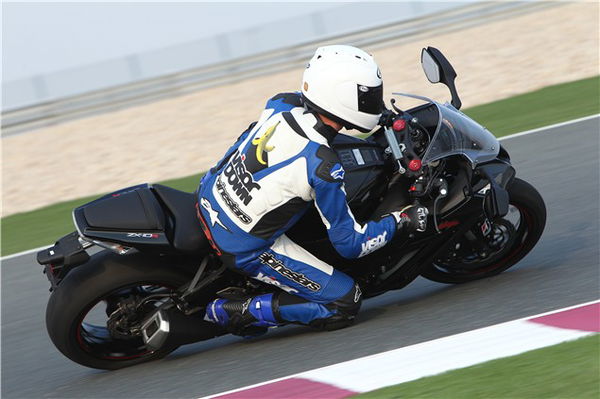
Should you buy the 2011 Kawasaki ZX-10R?
The traction control is this bike's best asset. On track, it's a fantastic way to help you go faster. On the road, it's perfect for building confidence. Doubters say it takes the skill out of riding but if you pay attention to what it's doing, it'll help you build control with much less risk. You can't just crack the throttle open and hope the bike will do all the work. - it won't.
On track you can get on the power earlier than you normally would and you'll be surprised at how early and how hard you can get on the power before the traction control cuts in. On the road, you can stay relaxed when the surface conditions change and focus on the road ahead.
Mirrors on superbikes are often good for catching flies and giving you a good view of your elbows but not much else. The ones on the ZX-10R have long stalks and give you good rear vision. Ducati if you're reading this: copy Kawasaki's. Thanks.
Here was me thinking bikes were limited to 186mph (300kph), but the big Kawasaki shows 189mph on the clocks. An extra 3mph, but why? Is this a little bit of one-up-manship on the opposition?
All bikes have a natural cruising speed, a speed where everything seems to be humming along quite happily. For me, the ZX-10R feels right at 95mph; the wind flows over my helmet, the engine's not screaming, life's good. What impresses me is that at this speed it still returns 43mpg. That almost warrants sticking a 'Prius' badge on the tailpiece.
When I first heard the ZX-10R had anti-wheelie, I thought it was the start of the end. If you crack the throttle open in 1st gear, the front will lift a couple of inches from the ground but then the anti-wheelie will subtly wave its safety wand and bring the front back down. However if you keep it pinned and change into 2nd, the front lifts straight away and you can either hold it in 2nd or monster it through the box without the anti-wheelie stepping in.
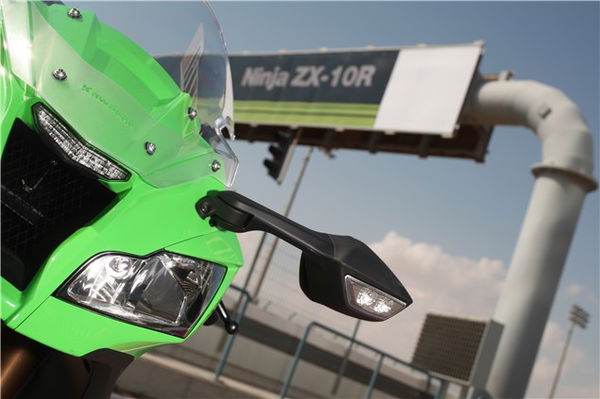
2011 Kawasaki ZX-10R specs
DRIVETRAIN
Transmission 6-speed, return
Final Drive Sealed chain
Primary reduction ratio 1.681 (79/47)
Gear ratios: 1st 2.600 (39/15)
Gear ratios: 2nd 2.053 (39/19)
Gear ratios: 3rd 1.737 (33/19)
Gear ratios: 4th 1.571 (33/21)
Gear ratios: 5th 1.444 (26/18)
Gear ratios: 6th 1.348 (31/23)
Final reduction ratio 2.294 (39/17)
Clutch Wet multi-disc, manual
FRAME
Frame type Twin spar, cast aluminium
Wheel travel, front 120 mm
Wheel travel, rear 125 mm
Tyre, front 120/70ZR17M/C (58W)
Tyre, rear 190/55ZR17M/C (75W)
Rake/Trail 25.5°/ 110 mm
Steering angle, left / right 27° / 27°
SUSPENSION
Suspension, front 43 mm inverted fork with rebound and compression damping,
spring preload adjustability and top-out springs
Suspension, rear Horizontal Back-link with gas-charged shock and top-out spring
Compression damping: Stepless, dual-range (high/low-speed)
Rebound damping: Stepless
Spring preload: Fully adjustable
BRAKES
Brakes, front Dual semi-floating 310 mm petal discs,
10-button aluminium rotor carrier
Caliper: Dual radial-mount, opposed 4-(aluminium) piston
Brakes, rear Single 220 mm petal disc
Caliper: Single-bore pin-slide, aluminium piston
DIMENSIONS
Dimensions (L x W x H) 2.075 x 715 x 1.115 mm
Wheelbase 1,425 mm
Ground Clearance 135 mm
Seat height 813 mm
Curb Mass 198 kg / 201 kg (ABS)
Fuel capacity 17 litres
PERFORMANCE
Maximum power 147.1kW {200.1PS} / 13,000 rpm
Maximum power with RAM Air TBC
Maximum torque 114.3 N•m {11.7kgf•m} / 11,500 rpm
ENGINE
Engine type Liquid-cooled, 4-stroke In-Line Four
Displacement 998 cm³
Bore x stroke 76.0 x 55.0 mm
Compression ratio 13.0:1
Valve/Induction system DOHC, 16 valves
Fuel system Fuel injection: φ47 mm x 4 (Keihin) with oval sub-throttles, dual
injection
Ignition Digital
Starting Electric
Lubrication Forced lubrication, wet sump with oil cooler
